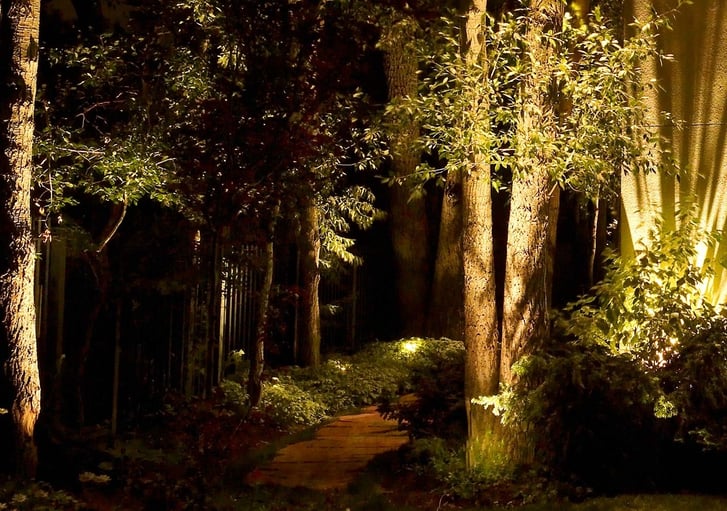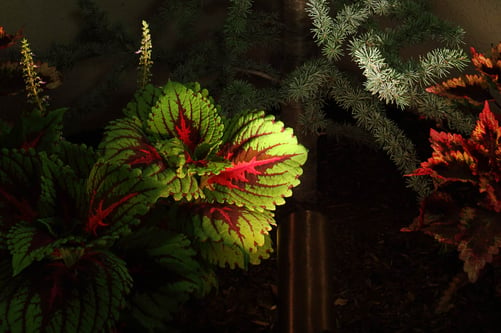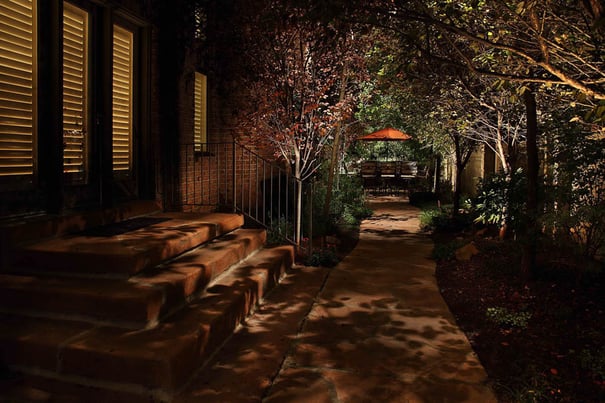Uplighting & downlighting: The best of both worlds
To ensure safety and security for your home, it is crucial to grasp the fundamentals of lighting design.
Uplighting and downlighting are the foundation of any basic lighting design.
Striking a balance between the two is essential to create a scene that provides equilibrium and composition.
The goal is to avoid a flat and two-dimensional appearance by incorporating multiple light sources that offer depth, layers, and contrast to create different scenes.

Uplighting and downlighting serve as the foundation of any basic lighting design. Both are essential to achieve a scene with balance and composition.
The last thing you want is to create a flat and two-dimensional scene. To create depth, layers, and contrast, multiple light sources are needed to craft various scenes.
Let’s briefly discuss the roles of these two approaches.
Downlighting is frequently employed to gently illuminate an area.
This is achieved by positioning the light source at a high point and directing it downward toward the desired area. Downlighting is commonly used to illuminate patios, walkways, steps, driveways, and similar spaces.

Uplighting is utilized to illuminate an object from below, typically at or near its base.
By casting light upward from the base, it effectively captures the image of the illuminated object. This type of lighting is commonly used to accentuate trees, architecture, water features, and more. Its purpose is to create a backdrop and define the surrounding space.
You might be curious about the importance of uplighting, particularly if your intention is solely to downlight your back patio or front entryway.
The answer is straightforward – uplighting plays a crucial role in establishing a scene and defining the area itself.
While downlighting your back patio provides functional light for the immediate vicinity, it is only when you incorporate uplighting as a backdrop to delineate the space that your patio truly comes alive, creating a captivating atmosphere.

Explaining the role of uplights can be challenging, but let’s envision walking along a winding gravel path flanked by trees on both sides.
As you proceed along the path, you notice the presence of light fixtures positioned between the path and each tree.
These lights illuminate the trees, thereby enhancing the shape of the path. By casting light on the trees, the path itself is outlined without directly illuminating it.
To effectively illuminate this path, a combination of both uplights and downlights would have the greatest impact.
Utilizing downlighting to illuminate the path itself and uplighting to define its shape enables the creation of a scene with depth and composition.
Simply throwing light onto something is effortless, but crafting a scene requires a visionary approach.
Give us a call: To learn more about how to light your outdoor living space, call us at (801) 440-7647 to schedule a free consultation, or feel free to simply fill out a contact form on our website.
Located in Midvale, Landscape Lighting Pro of Utah serves throughout Utah’s residential areas, including Salt Lake City, Park City, Draper, Davis, and Utah Counties. Our outdoor lighting portfolio includes projects throughout Utah and beyond.
Salt Lake City (Midvale)
801-440-7647
St. George
435-932-6627
©2025 Landscape Lighting Pro
Privacy Policy
Cookie Policy